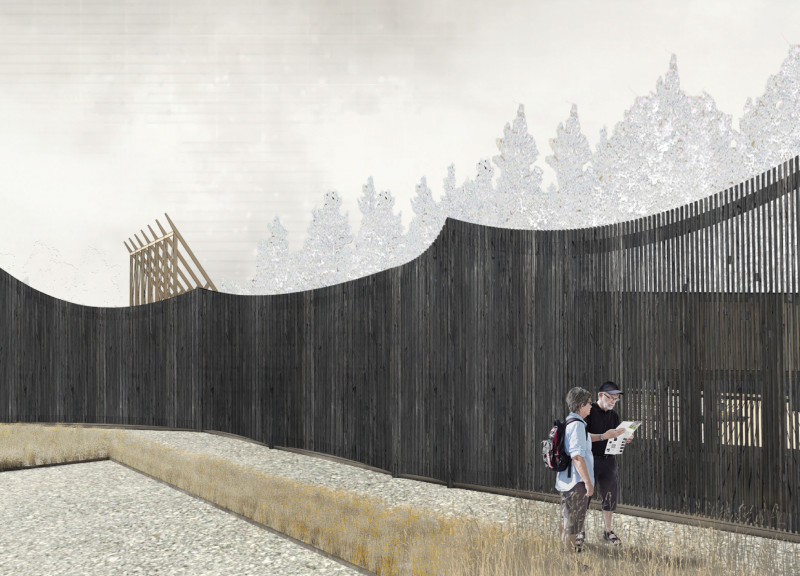5 key facts about this project
The architectural proposal integrates built forms with natural landscapes to create a space defined by its relationship between land and sky. Located near the extensive Kemeri Bog, the concept features a man-made clearing that serves as a vertical axis intersecting with the horizon. There is a horizontally extended path that enhances accessibility, inviting visitors to explore the area. This design facilitates both contemplation and learning.
Design Concept
A notable aspect of the plan enables knowledge gathering through a visitor center exhibition, while it also acts as a refuge. The spatial layout encourages engagement with the environment, allowing visitors to immerse themselves in the experience. Carefully arranged pathways guide individuals through the space, ensuring they can move freely and comfortably while discovering its various functions.
Functional Spaces
The design includes well-defined zones dedicated to relaxation, education, and community interaction. These areas work together to enhance the user experience. The visitor center combines educational facilities with social spaces, effectively linking the museum and café. The inclusion of amenities such as camping facilities, bathrooms, a playground, and a bus drop-off supports diverse visitor needs, reinforcing the role of the center as a multifunctional hub.
Material Use
The structure features enclosing walls made from Shou Sugi Ban charred wood. This traditional Japanese method provides durability and maintains the aesthetic appeal of the wood. As a result, the building harmonizes with its surroundings. Using this type of material reflects an awareness of environmental concerns and cultural practices that enhance the design’s connection to place.
Design Experience
Thoughtful integration of functional areas and attention to materials create an architecture that responds to the landscape and its functions. Natural light filters through the scrim-like walls, offering changing illuminations within the interior environment throughout the day. This interaction enriches the sensory experience, allowing users to connect with their surroundings as they navigate through different spaces. The design invites exploration and reflection, making the journey an essential part of the overall experience.


























